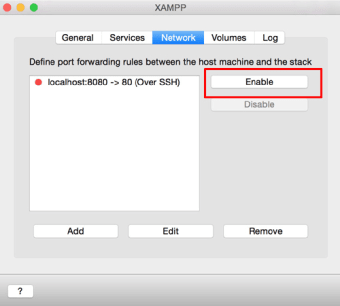- Install Apache for Mac OS X. Mac OS is ultimately built on Unix so its very easy to install any Unix supporting softwares. Even better part is that Mac OS X comes with apache web server and we just need to start it and make some changes to setup our development environment. We will start apache server with root user to avoid any permission issues.
- Setting up a local web server with PHP on MAC OS X. Posted on December 1, 2016, 2:35 pm, by Ilan Hazan, under Apache, Mac OS X, PHP. Mac OS X runs atop UNIX. Apache and PHP come packaged with OS X. To create a local web server, all you need to do is enable them. Starting Appache. Open the Terminal app (command line) and type.
Each Mac has a built-in Apache server that runs a built-in PHP.
To upgrade it you need less than 10 minutes once you have understood all the steps needed.
Note: Versions of Mac OS X prior to 10.5 were bundled with older versions of PHP and Apache. As such, the Apache configuration file on legacy machines may be /etc/httpd/httpd.conf. With a text editor, uncomment the lines (by removing the #) that look similar to the following (these two lines are often not together, locate them both in the file). Server Fault is a question and answer site for system and network administrators. It only takes a minute to sign up. How do I figure out which./configure options to use when building PHP 5.3.0 on Mac OS X? There are 10 zillion options and I have no idea which ones to use. So, by default Mac OsX has PHP 5.5.24 with xDebug 2.2.3 and our php.ini is located at /usr/bin/php. How to update PHP on Mac OsX As we want to update the built-in version of PHP of our Mac OsX, at this point maybe its better to think at a more valuable solution.
The same applies also to install the last PHP 7.1 version: you only need to change the required version of PHP (see below).
Exploring the LAMP server of a Mac
To understand the built-in PHP of your Mac the first thing you should do is open your terminal and type in:
This is the PHP version installed in your Mac.
But, from where is it executed?
And the php.ini?
So, by default Mac OsX has PHP 5.5.24 with xDebug 2.2.3 and our php.ini is located at /usr/bin/php.
How to update PHP on Mac OsX
As we want to update the built-in version of PHP of our Mac OsX, at this point maybe its better to think at a more valuable solution.
Update PHP… go to php.net/downloads.php, download the latest version of PHP, unzip, compile, configure… Mmm, there is a better solution for sure!
And in fact, those good boys at Liip have thought that there should be a better solution… And they built it!
So, in your Terminal, type (use 7.1 if you want to install the last PHP 7.1 version!):
You have just downloaded the best PHP latest version you can find ever.
Now, let’s configure it: it needs less then 5 minutes!


WARNING: If you receive an error like, then you need to stop the built-in Apache instance and reinstall it from Homebrew: it seems the Apache version shipped with MacOS causes some troubles that prevent the server to starting.
Here all the information you need to disable the built-in version of Apache in MacOS and install a fresh new one with Homebrew.
How to configure your updated version of Mac OsX built-in PHP
The package you have just downloaded is a custom version of PHP built by Liip and it provides a lot more functionalities and useful PHP extension than the original Mac OsX built-in PHP, so you will save a lot of time when you’ll install and update them (think at Intl extension or xDebug, for example).
Once downloaded, the Liip’s PHP moves all the files into /usr/local/php5-5.6.11-20150710-223902/bin and makes a symlink of this folder called php5. In this way, when you’ll update PHP, Apache will automatically load the new PHP version (see more about this in a moment). Really smart!
If you type in Terminal again which php you’ll get the same result as before. This is because we have to tell our Mac OsX to load PHP from the new location.
To do this we will create a .bash_profile in our user directory:
This will open VIM that will create the new file (if it is already present, type the letter a to enter the edit mode).
Into the .bash_file write the line export PATH=/usr/local/php5/bin:$PATH, then press Esc and type SHIFT + Zfor two times (a shortcut to save and close the file).
Then load again the .bash_profile file and restart Apache:
Php Web Server Mac
You have updated your Mac OsX built-in PHP.
On the Liip’s PHP Mac OsX home page you will find a lot of useful information about your new PHP.
The next step you should do is open the php.ini located at /usr/local/php5/lib/ and set it the right way.
Php Server Mac Os X
And, once you have configure your php.ini, maybe you want to configure your Mac Osx built-in Apache or want to install MySQL in your Mac (as it is not shipped by default).
Mac Os Php
Remember to “Make. Ideas. Happen.”.
Server Php For Mac Os X64
I wish you flocking users, see you soon!